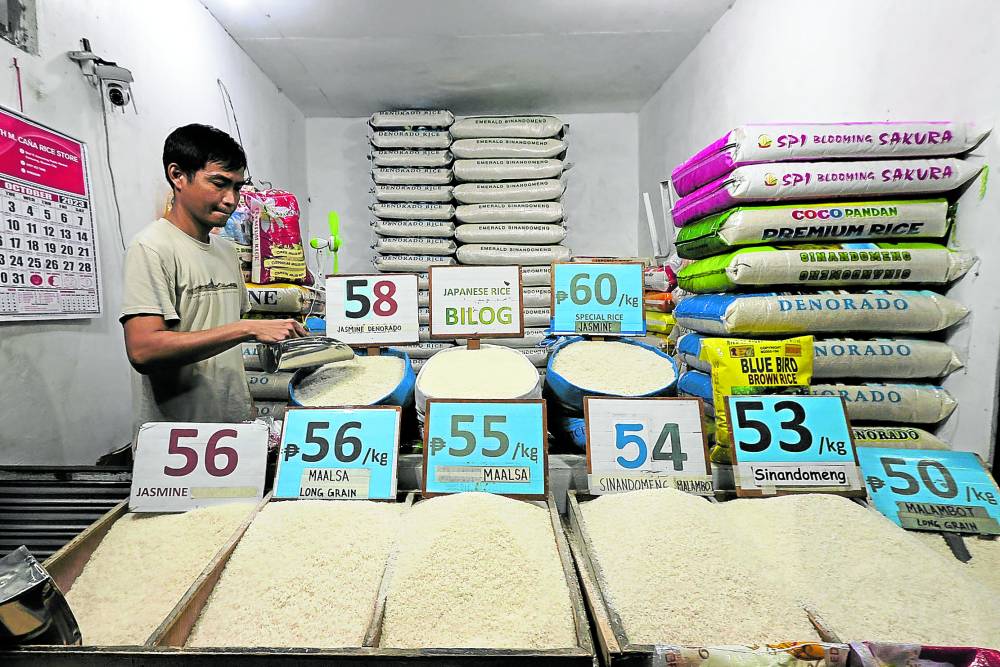
INQUIRER FILE PHOTO / GRIG C. MONTEGRANDE
Rice continues to be sold at over P50 per kilo since November last year, with the Department of Agriculture (DA) stating that due to global market prices remaining high at around $600 per metric ton, a significant decrease in retail prices is not anticipated.
“Hopefully, we can source rice from abroad at cheaper prices because imports from Vietnam and Thailand are quite expensive,” DA spokesperson Arnel de Mesa said in an interview on Thursday.
He clarified that the DA is actively monitoring and making efforts to secure an ample supply to cope with the El Niño phenomenon.
READ: DA ‘working double time’ towards P20 per kilo rice
Metro Manila monitoring
“As of now, what we are expecting … we’re in the lean season from January to mid-February. We’re waiting for the rice to be harvested between March and April,” the DA official said.
The upcoming harvest and the arrival of fresh imports should temper price spikes, De Mesa added.
In Metro Manila as of Thursday, public markets are selling local regular milled rice from P50 to P53 per kilo, higher than P34 to P40 per kilo a year ago, based on the department’s price monitoring.
READ: Rice: ‘Higher prices’ expected in December
Farm-gate price
Locally produced well-milled rice is priced from P40 to P55 per kilo, also higher than previous range of P38 to P44 per kilo.
Imported regular milled rice is currently not available in the metropolis, but last year it was sold from P37 to P38 per kilo.
Imported well-milled rice ranged from P51 to P56 per kilo, compared to P40 to P44 per kilo last year.
The retail price of rice is usually at least double the farm-gate price (or the selling price between farmers and traders) of palay, or the unhusked grain. The farm-gate price is largely influenced by traders.
ALSO READ: Presyo Merkado: Current prices of food in Metro Cebu markets
Mostly from Vietnam
For years, the Philippines has heavily relied on importation to fill the supply gap, as local production could not meet the country’s full requirements.
De Mesa said the local supply of rice mostly comes from farmers who sell at P19 to P22 per kilo.
Last year, the country imported rice amounting to 3.5 million MT (as of Dec. 28), based on the figures from the Bureau of Plant Industry.
The majority came from Vietnam, accounting for 2.9 million MT of the total, while Thailand and Myanmar supplied 297,198.10 MT and 143,913 MT, respectively.